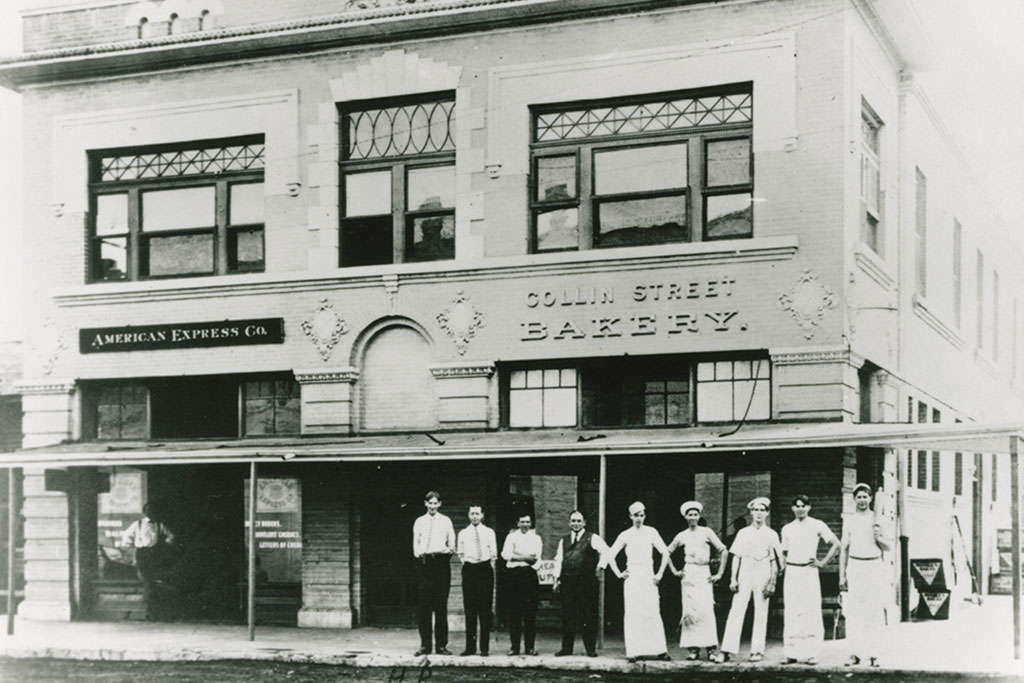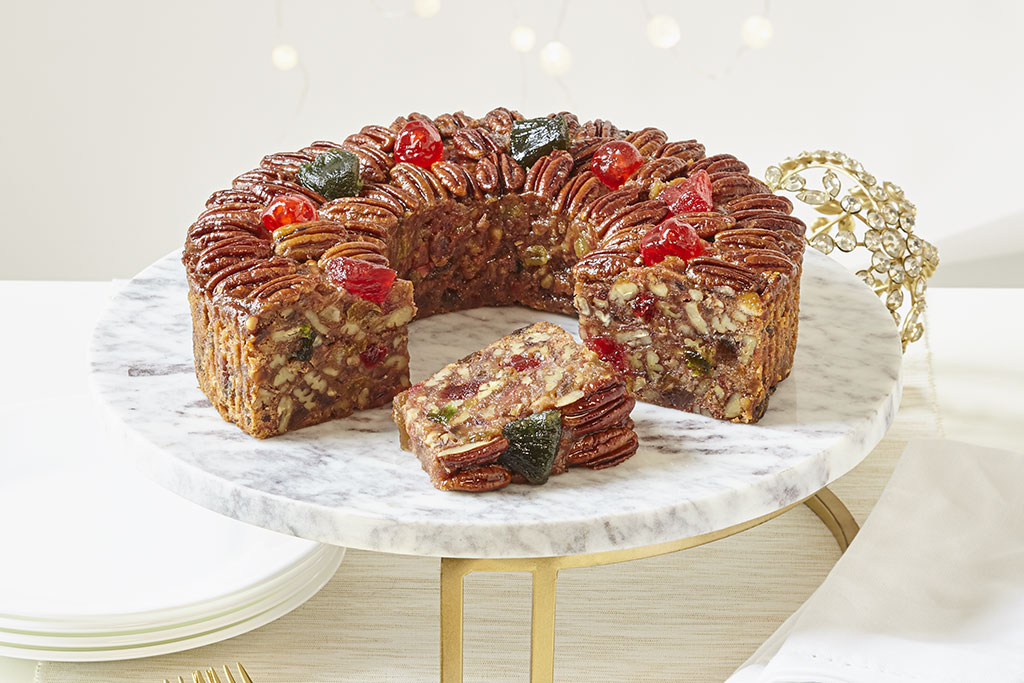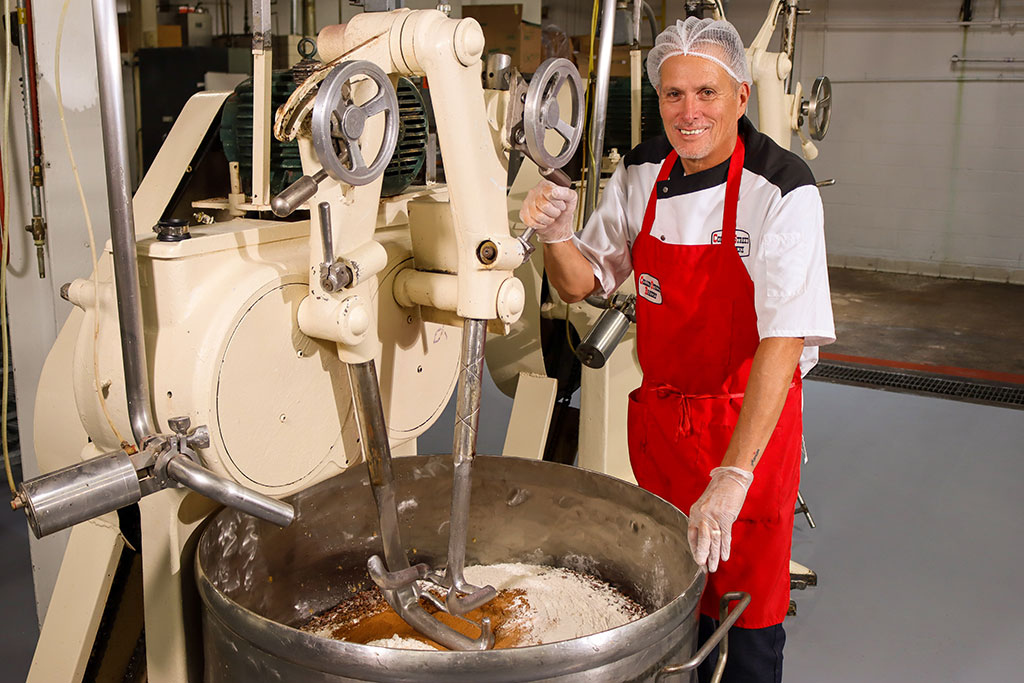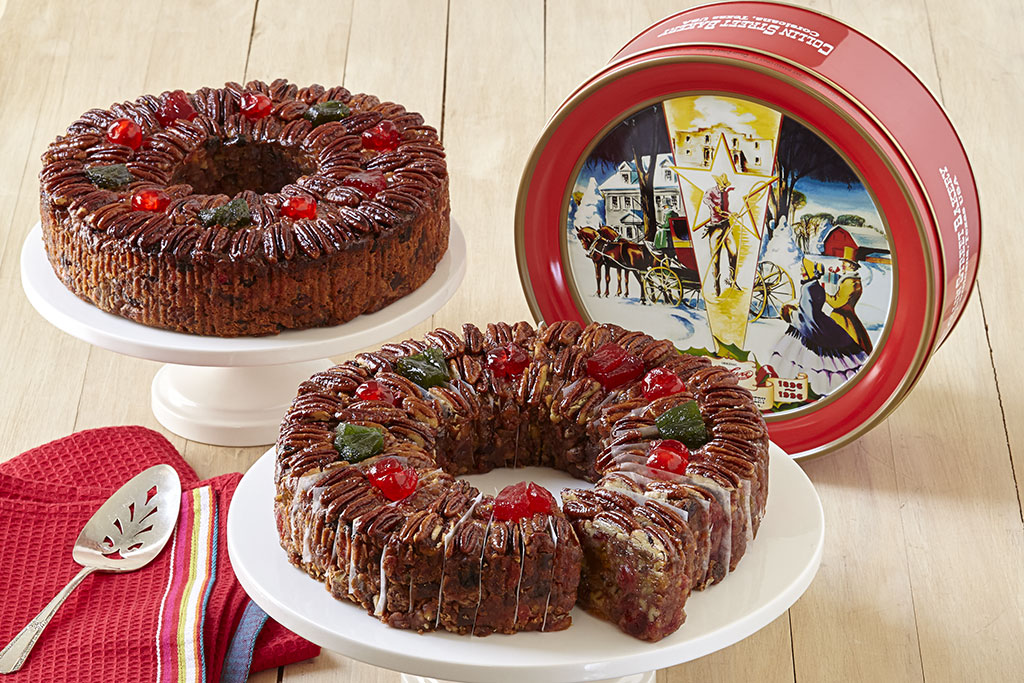With the holidays fast approaching, this issue of American Lifestyle aims to celebrate the season of giving and togetherness. Inside, learn about Toys for Tots’ mission of generosity, find recipes to sweeten your celebrations, get inspiration for designing a comforting home, and uncover the story behind an enduring bakery and its fruitcakes.
Toys for Tots serves as a powerful reminder of the difference that even a small act of kindness can make. Discover this organization’s remarkable history and widespread impact—both in these months and beyond—and see how you can help bring smiles to children in need during the holidays.
As you prepare to gather with family and friends, you may be pondering what to make for dessert. This issue serves up two delightful recipes that are perfect for the occasion: a bright and zesty lemon and blueberry coffee cake and warm oatmeal cookies. Whichever you pick, neither will last long on the table.
Blending contrasting styles isn't always easy in interior design, but Judi Lee-Carr made it work when transforming a Ventura, California townhome into a serene, modern retreat. She shares her general philosophy, the approach she took for this new-build project, and how she settled on specific elements.
Though somewhat derided in years past, fruitcake is an undeniable tradition this time of year. Just ask Collin Street Bakery, which has been making them for nearly 130 years. Explore the fascinating story behind this institution along with how it has adapted its approach and expanded its offerings over the decades.
Here’s to a wonderful season spent with those who mean the most to you! As always, it’s a pleasure to send you this magazine.
The holiday season is about more than just presents—it’s about fostering connection and spreading kindness and joy. One organization driven by such a mission is Toys for Tots, which brings hope and happiness to children in need throughout the nation via the gift of new toys.

Founded in 1947 by Marine Corps Reserve Major Bill Hendricks, the nonprofit began as a small endeavor in Los Angeles. Hendricks’s wife, Diane, had some handcrafted dolls she wanted to donate to underprivileged children and asked him to find an agency that would distribute them. Unfortunately, he was unable to—so he and his fellow marines took on the initiative themselves, collecting and delivering 5,000 toys in the area that season.
Recognizing the widespread potential of this effort, the US Marine Corps turned Hendricks’s local efforts into a national community-action program the following year. Since then, it has grown into one of the most recognized and respected charitable organizations in the country. Campaigns are now conducted in over eight hundred communities in all fifty states as well as Puerto Rico, Guam, and the US Virgin Islands.

During its seventy-five-plus-year history, Toys for Tots has collected more than 708 million toys from generous donors and distributed them to over 314 million children, ensuring that they experience the magic of the holidays. In 2024 alone, it provided over 30 million toys to around 13 million children—record-breaking numbers for the organization.
In addition to its seasonal toy drive, it operates year-round programs like its Foster Care Initiative, which provides foster children with toys, books, and other items to take with them as they move, and its Literacy Program, which gives books and educational resources to economically disadvantaged kids. These efforts allow the charity to both help young people overcome obstacles and bring hope in stressful times.

Toys for Tots relies on the kindness of individuals and businesses alike, and there are several different ways to get involved during these months. To start, you can purchase new, unwrapped toys and use its online search tool to find the nearest drop-off location; if your community doesn’t have a local toy drive, consider applying to become a coordinator and manage a campaign yourself.
Business owners, meanwhile, can volunteer their stores to be toy drop-off sites and storage centers for the items until they’re distributed. The organization also relies on volunteers to collect, sort, and deliver the toys to children in their respective areas. And, of course, it also accepts monetary donations, with over 97 percent of every donation going directly toward its programs.
While Toys for Tots’ core mission is to collect and distribute toys, its impact goes far beyond the gifts themselves. The program fosters a spirit of community and compassion, bringing people together for a common cause. For so many children, receiving a gift from the nonprofit serves as a reminder that they are valued, bringing extra joy when they need it most.
For more info, visit toysfortots.org
Cooking and baking for guests can make you feel like you’re under a lens, but these simple yet beautiful recipes are sure to satisfy even your most finicky eaters. From a stately cake that forms a breathtaking centerpiece to spiced cookies that perfectly encapsulate cozy flavors, they may become favorites on your holiday table for years to come.
A delightful infusion of fresh berries and bright citrus reinvents this typically basic dessert.
Transform a classic cookie into a warm hug with add-ins like ground nuts, maple syrup, and currants.
© The Flour Craft Bakery & Cafe Cookbook by Heather Hardcastle, Rizzoli New York, 2021. All photographs are © Erin Scott, but no images may be used, in print or electronically, without written permission from the publisher.
recipe by heather hardcastle
photos by erin scott
I’m a big fan of the humble Bundt cake. There’s something so old-fashioned and homey, yet impressive, about its appearance. I collect vintage Bundt pans and some of the designs are so intricate! Look for them at your local flea market or garage sales. A little scrub is all it takes to bring them back to life. I like this cake for so many reasons, most notably because it’s ultra-light from the whipped eggs and sugar, which add so much airy goodness to the finished cake.

Serves 10–12; cook time: 40–45 minutes


recipe by heather hardcastle
photos by erin scott
I have no willpower when it comes to these cookies! I love the butteriness that comes from the ground nuts and the pops of bursty currants and warm spices. The only sweetener is maple syrup and they’re entirely vegan, so in my opinion they’re practically a breakfast cookie, not that I’ve ever tried eating them for breakfast or anything.

Makes 18 cookies; cook time: about 20 minutes


Judi Lee-Carr, owner and principal designer of Jubilee Interiors in Southern California, discusses how she transformed a newly built Ventura townhome into a warm, inviting space.

How did you get started in interior design?
I was born and raised in Singapore, and my background is actually in fashion merchandising and marketing. I was going to school for it, but I dropped out because I got a great job in luxury retail, where I transitioned into visual merchandising and designing the visuals in the stores. One day, while working on an installation, a customer commented on my work and asked me to design his home. That led to further opportunities, including working on hotel projects in Indonesia, where I lived for a year and a half.
Eventually, I moved to London to complete my degree before moving back to Singapore, where I took on more interior design projects. In 2018, I relocated to California to be with my husband. I secured a job as an interior designer for a local builder, but when the pandemic hit, I took the leap to start my own business because work opportunities were so limited. It turned out to be the perfect timing since people were spending more time at home and realizing the importance of creating comfortable, functional spaces.

What was it like opening a design firm during the pandemic?
It was a steep learning curve, especially as an immigrant still navigating a new country. Initially, I focused on channeling my creativity and helping people make their houses feel like homes. However, I quickly realized that being a business owner involves much more than just design—there’s marketing, accounting, inventory management, and client relations. It was challenging, but I truly believe in the importance of the human element of running a business and creating homes for people, so it was all worth it. It was an incredible privilege to be invited into people’s homes during such an uncertain time, helping them create spaces that felt safe, comforting, and truly theirs.
Would you describe your design philosophy?
My design ethos revolves around organic modern living: a balance of neutral, earthy tones that feel cozy and timeless. That said, design is inherently opinionated, and we sometimes pivot from our signature aesthetic to better align with our client’s vision. Whether designing personalized spaces for homeowners or curated interiors for model or spec homes, our focus is always on creating practical, timeless environments that feel like sanctuaries. For homeowners, we take the time to understand their daily habits, favorite places, colors, and even the little details that make a space truly personal, which allows functionality and individual preferences to shape the final design.

Tell us about this Ventura townhouse project. What was the vision?
The townhome is a modern, California Spanish-style new build, and we wanted to ensure that the interior reflected the exterior. But the clients were also really interested in coastal living and a more transitional style that incorporated their cultural heritage. We worked together to bridge these different aesthetics and interests to design rooms that felt cohesive and unique.
What was the design process like?
I started by creating a concept board to help me better understand what kinds of colors they like using and the type of art they appreciate. The husband is into photography, so he really enjoys a lot of architecture, black and white, and symmetrical proportions, which initially didn’t align with the more transitional style they had envisioned. So I worked to incorporate these elements in a way that felt harmonious with the home’s overall style.
I chose a neutral color palette with white walls and medium walnut accents throughout the home, including on the kitchen range hood, fireplace mantel, and stairwell, that matched the home’s exterior. A lot of the furnishings are a more simple, transitional aesthetic. They’re timeless pieces that are very classic, so they worked well with the clients’ goals and our design philosophy. I also framed his photography in the living space to create a gallery wall around the TV, which functions as an art display as well.

How did you decide what elements to include?
Generally, I consider what resonates with me and my design style. While trends come and go, I focus on incorporating timeless pieces, such as neutral colors and classic silhouettes, with materials that feel enduring. Take the light fixture in the dining room, for example. It’s a key piece to the room’s design, and I’m obsessed with it. It features a raffia-woven material that ties in perfectly with the rest of the space, adding character without overpowering the room. The natural organic silhouette of this pendant complements the overall design, and it’s a piece that won’t feel outdated in a few years.
What role did the stairwell’s wallpaper play in the design?
That wallpaper was one of the most impactful decisions in the overall design. It ties in beautifully with the townhome’s unique location—the ocean is on one side and the mountains on the other. The blue and green in it naturally echo the serene, earthy tones of the landscape, as does its rich seagrass texture. I had actually kept this particular wallpaper in my sample library for years, waiting for the perfect opportunity. Once I saw this space, I knew it was the right fit!

How did you connect it to the rest of the home?
We used the colors from the wallpaper to honor the natural beauty they are surrounded by, scattering pops of blue and green throughout the home, as you can see in the wallpapers in the guest bathroom and primary suite and also in the tiles on the kitchen island. We wanted the spaces to not only complement each other but also feel very different.
We opted for a green, more geometric wallpaper in the powder room but then went with a coastal vibe in the primary bedroom and bathroom, incorporating more of the blues there because they face the sea. On the kitchen island, we used a green-and-white terra-cotta tile that features the Spanish star; it’s a very strong element that ties in with the architecture of the home as well. These aspects helped us create a very cohesive design that reflects the uniqueness of the townhome’s architecture and location while also catering to the clients’ preferences.
For more info, visit jubilee-interiors.com
Hayden Crawford, a partner in Collin Street Bakery, shares the fascinating story of the nearly 130-year-old business, what makes its world-famous fruitcakes unique, and what’s next for the company.

How did Collin Street Bakery begin?
August Weidmann, a German immigrant who settled in Corsicana, Texas, founded it as a small bread and pastry bakery in 1896. A few years later, a local entrepreneur partnered with him, and they soon moved it to another location with a second-floor hotel and bigger production facility.
My business partner’s family, the McNutts, headed a group that bought it from them in the 1940s. In 1951, after many years in the regional bread business, the company moved out of that increasingly competitive industry and shifted its attention to fruitcake. The rest is history.

How did your fruitcakes become so popular?
In the 1890s, Corsicana became the largest oil producer in the world, enticing people and businesses to pour in. Among our hotel’s visitors were celebrities such as John Ringling, who bought our fruitcakes and gave them out as gifts when he traveled with his circus. Those recipients then contacted us for more, and our mail-order business—one of the first in the country—began, allowing people to order from practically anywhere in the world.
That was also possible because of the fruitcake itself: it’s dense, so it would last much longer than other foods at the time. We could even ship the product overseas; despite taking a month to arrive, it would last much longer than other foods at the time.
Johnny Carson famously joked about fruitcake. What kind of effect did that have?
The jokes and skits on his show in the 1980s brought in an era of fruitcake negativity. Before then, Collin Street Bakery had a very strong corporate business. But in the years following, we saw such sales continually decline—no doubt because these companies were concerned about how their gift might be perceived.
Here’s how bad it got: even perception was going against us. We’d ask people, “Do you like fruitcake?” and most would say no. But when we asked those same folks whether they had ever tasted it, the answer would also be no. That stigma lasted for years. Luckily, with it a few generations behind us, corporate sales have since returned.

What makes your fruitcakes so special?
First, it’s a wonderful product. Almost a third of every one we produce is pecans, and the remainder is a delicious medley of glacé fruits, including pineapple, cherries, raisins, and papaya, that are bound together by a secret batter moistened with locally harvested clover and wildflower honey. In addition, each DeLuxe Fruitcake—our original product—is hand decorated, making them slightly different and one of a kind.
When did you begin expanding your offerings?
For the longest time, we had one item: our DeLuxe Fruitcake. But when the gags started, we wanted to create another option that had a different look since its appearance was apparently the issue. That led to the Texas Blonde, a pecan cake that has no red and green fruits on it, followed by an apricot pecan cake. More recently, we’ve branched out to all sorts of other products, including pies and cheesecakes.

How in demand are Collin Street Bakery’s fruitcakes today?
We produce about a million pounds per year and deliver them to all fifty states and around 190 countries—almost every single nation you can ship into. For many people, it has become a tradition through multiple generations. We even published a book of customer testimonials about how our DeLuxe Fruitcake or company has positively affected their families and holiday traditions.
We certainly have some amazing stories. A guy who worked at the South Pole ordered one to help his team celebrate the holidays. A Kilimanjaro climber arranged for his fruitcake to be delivered up the side of the mountain by a Sherpa. Another customer told us he smuggled his through the Berlin Wall so he could share it with friends on the other side. We count many celebrities as customers, too, including Hall of Fame pitcher Nolan Ryan, singer Lyle Lovett, Vanna White, and Chuck Norris.
Does your fruitcake have any health benefits?
Despite having “fruit” in the name and being chock-full of it along with healthy nuts, people always wonder if it’s bad for you. It is cake, after all. But in recent years, we’ve gotten interesting feedback—bicyclists told us they eat our fruitcake because it’s a calorie-dense product that gives them long-lasting energy.

What’s next for Collin Street Bakery?
Based on those athletes’ feedback, we created a new item: energy bars. I’m also excited to say that we’ve started rolling out our foods into grocery stores across the country, so keep an eye out for them! Overall, though, we’re still a family business making baked goods that mean so much to so many. That’s why we love coming to work every day.
For more info, visit collinstreet.com








